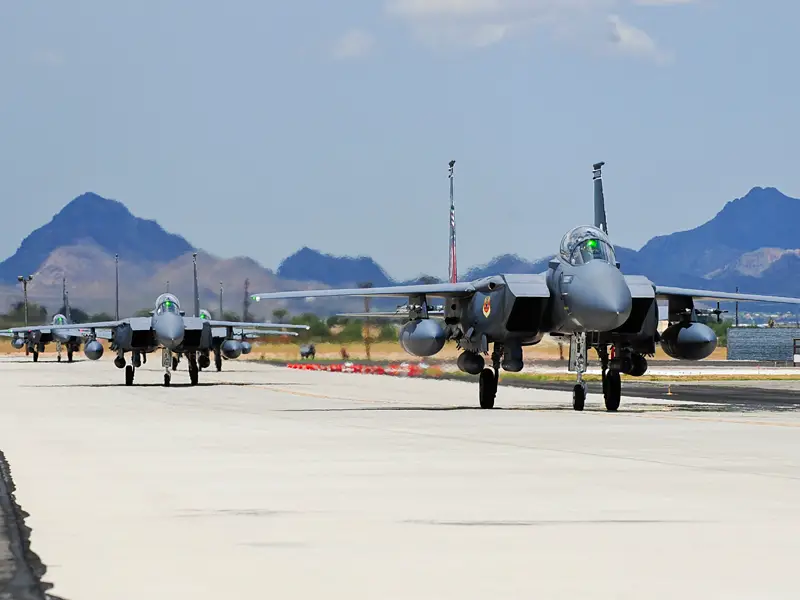The U.S. State Department has made a determination approving a possible Foreign Military Sale to the Government of Singapore of F-15SG Munitions, Follow-On Training and Sustainment, and related equipment for an estimated cost of $630 million. The proposed sale will enable the Republic of Singapore Air Force to continue its flight training program to develop mission-ready and experienced pilots to safely and effectively fly its F-15 aircraft, as part of the Peace Carvin V Detachment Training Program. The well-established pilot proficiency training program at Mountain Home Air Force Base will support professional interaction and enhance operational interoperability with U.S. Forces. Singapore will have no difficulty absorbing this equipment and support into its armed forces. This proposed sale will not alter the basic military balance in the region.
The Government of Singapore has requested to buy ninety (90) MXU-651 Air Foil Groups (AFGs) for 2000LB Paveway II (PWII), GBU 10; ninety (90) MAU-169 or MAU-209 Computer Control Groups (CCGs) for 2000LB PWII, GBU-10; one hundred forty (140) MXU-650 AFGs for 500LB PW-II, GBU-12; one hundred forty (140) MAU-169 or MAU-209 CCGs for 500LB PWII, GBU 12; twenty (20) Joint Direct Attack Munition (JDAM) KMU-556 tail kits for GBU 31; twenty two (22) JDAM KMU-572 tail kits for Laser JDAM, GBU-54; two hundred (200) FMU-152 fuzes; fifty (50) MK-84 2000LB General Purpose (GP) bombs; fifty (50) MK-82 500LB GP bombs; six hundred twenty-five (625) Mk-82 500LB inert bombs; DSU-38 and -40 Precision Laser Guidance Sets (PLGS) for Laser JDAM, GBU-54; KGV-135A cryptographic devices; impulse cartridges, chaff, and flares.

The McDonnell Douglas F-15 Eagle is an American twin-engine, all-weather tactical fighter aircraft designed by McDonnell Douglas (now part of Boeing). Following reviews of proposals, the U.S. Air Force selected McDonnell Douglas’s design in 1969 to meet the service’s need for a dedicated air superiority fighter. The Eagle first flew in July 1972, and entered service in 1976. It is among the most successful modern fighters, with over 100 victories and no losses in aerial combat, with the majority of the kills by the Israeli Air Force. The Eagle has been exported to Israel, Japan, and Saudi Arabia. The F-15 was originally envisioned as a pure air-superiority aircraft. Its design included a secondary ground-attack capability that was largely unused. The F-15E Strike Eagle, was later developed, entered service in 1989 and has been exported to several nations.
The F-15SG is a variant of the F-15E Strike Eagle and is similar in configuration to the F-15K sold to South Korea, but differs in the addition of the APG-63(V)3 active electronically scanned array (AESA) radar developed by Raytheon. The F-15SG is powered by two General Electric F110-GE-129 29,400 lbf (131 kN) thrust engines. FlightGlobal reported that Republic of Singapore Air Force (RSAF) has far more than the officially claimed 24 Boeing F-15SG fighter aircraft has emerged, although the precise number of airframes has yet to be ascertained. Over the years industry observers have come to share the belief that the true number of aircraft is probably 40 – not 24 – mainly owing to the range of registration numbers on Singapore air force registered F-15SGs. Singapore’s F-15SGs are split between Singapore and the USAF’s Mountain Home base in Idaho, where a training detachment is stationed.















